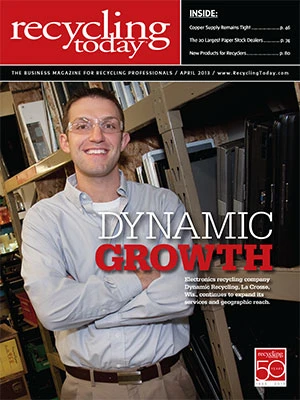|
|
New York City Mayor Michael Bloomberg proposed a ban on expanded polystyrene (EPS) foam food packaging, which is commonly referred to by the Dow trademark Styrofoam, in February. In a Bloomberg News article, the mayor describes the material as “something that we know is environmentally destructive and that may be hazardous to our health, that is costing taxpayers money and that we can easily do without, and is something that should go the way of lead paint.” According to the city, an estimated 20,000 tons of EPS food packaging enter its waste stream per year and removing the material from the recycling stream adds an estimated $20 per ton to the cost of recycling. In advance of Bloomberg’s State of the City address in which he called for restrictions on the use of EPS foam, the American Chemistry Council (ACC), Washington, D.C., said it was willing to work with New York City to explore the possibilities of developing an effective polystyrene foam recycling program for the city. In a written statement, Steve Russell, ACC vice president of plastics, says, “We would welcome the opportunity to explore polystyrene foam food service recycling with the city. The technology exists to recycle polystyrene foam food service right now. California is making this work—22 percent of households there can recycle polystyrene foam food service cups, plates, bowls, clamshells and other containers at curbside.” He adds, “Polystyrene foam food service products make up less than 1 percent of our nation’s solid waste, according to EPA (Environmental Protection Agency). They use significantly less energy and water to manufacture than paper alternatives and create significantly less waste by weight and comparable waste by volume.” Russell says the proposed ban also ignores the fact that successful examples of EPS recycling exist, such as the program in place in California. Also, according to the Alliance of Foam Packaging Recyclers (AFPR) website, www.epspackaging.org/images/stories/EPS_Sustainability_Tenets-lores.pdf, EPS packaging meets five of the criteria for sustainable packaging based on the Sustainable Packaging Coalition’s definition. Many examples exist for handling recyclables that are more complicated to recycle for various reasons, if only legislators would be willing to acknowledge and further develop such solutions rather than opt for banning such materials outright. |

Explore the April 2013 Issue
Check out more from this issue and find your next story to read.
Latest from Recycling Today
- Fenix Parts acquires Assured Auto Parts
- PTR appoints new VP of independent hauler sales
- Updated: Grede to close Alabama foundry
- Leadpoint VP of recycling retires
- Study looks at potential impact of chemical recycling on global plastic pollution
- Foreign Pollution Fee Act addresses unfair trade practices of nonmarket economies
- GFL opens new MRF in Edmonton, Alberta
- MTM Critical Metals secures supply agreement with Dynamic Lifecycle Innovations






